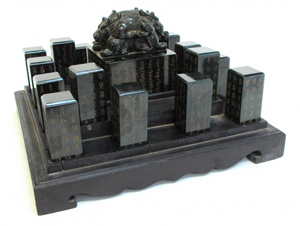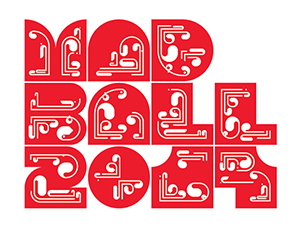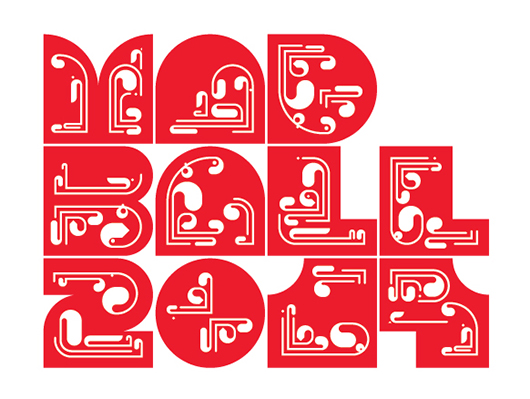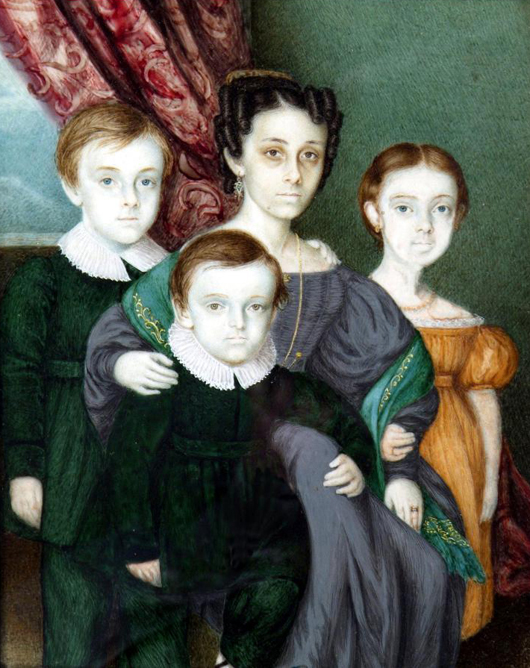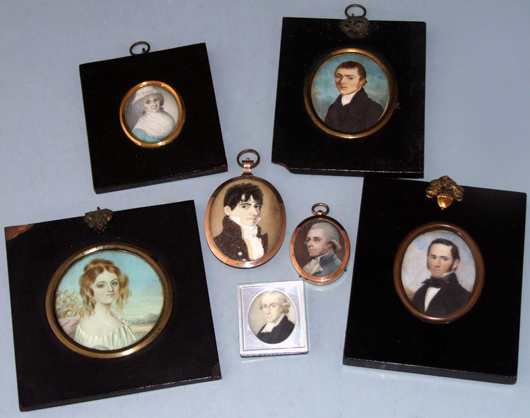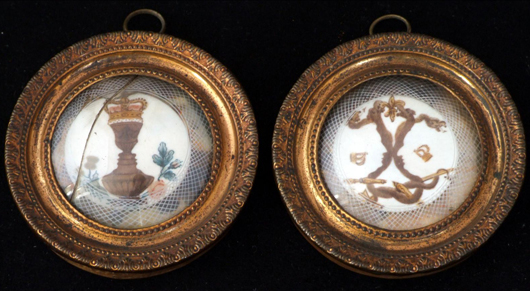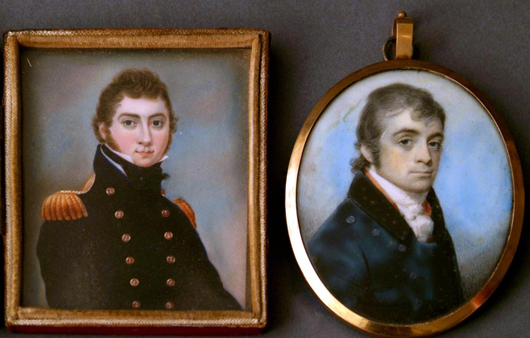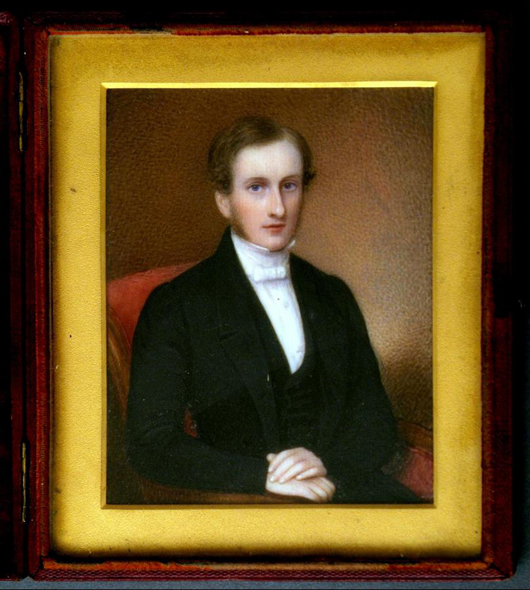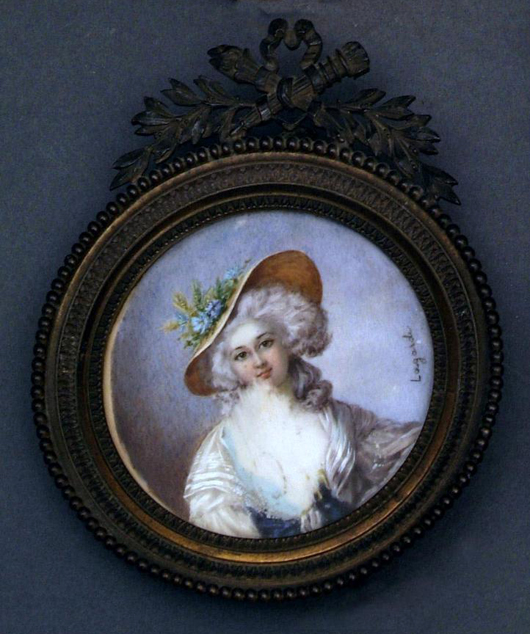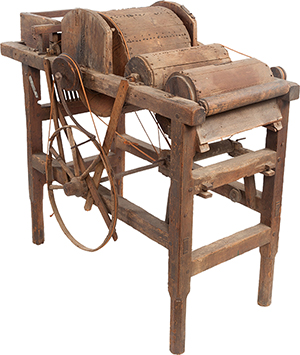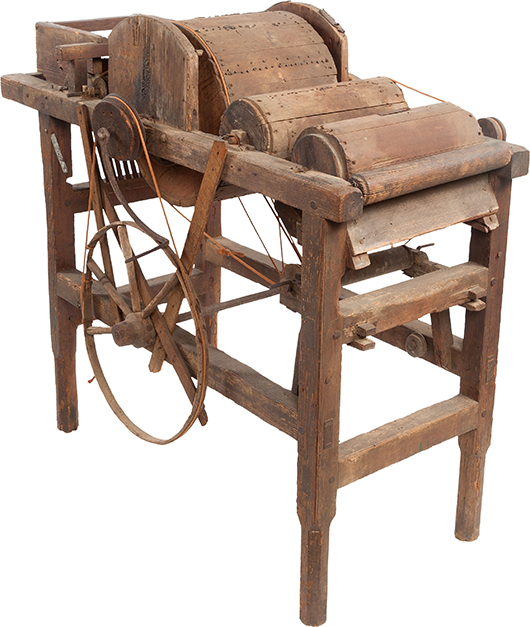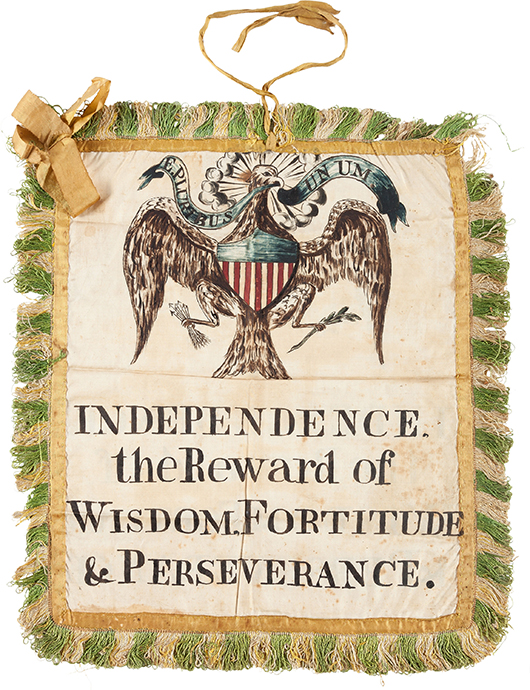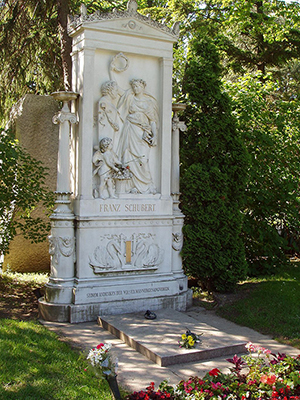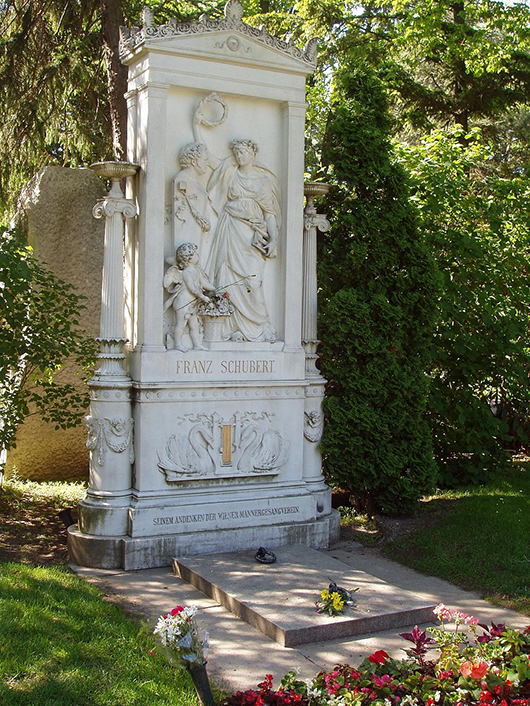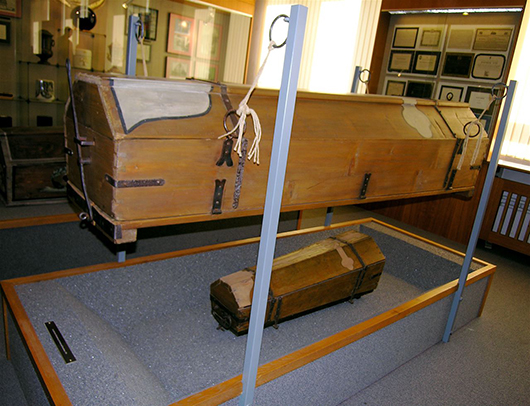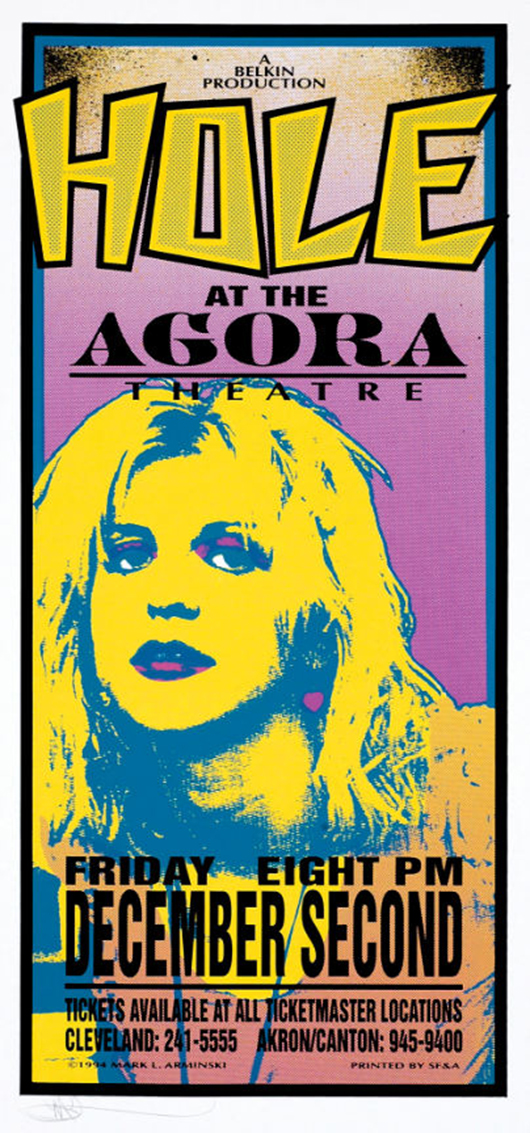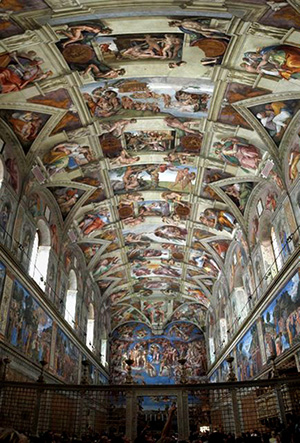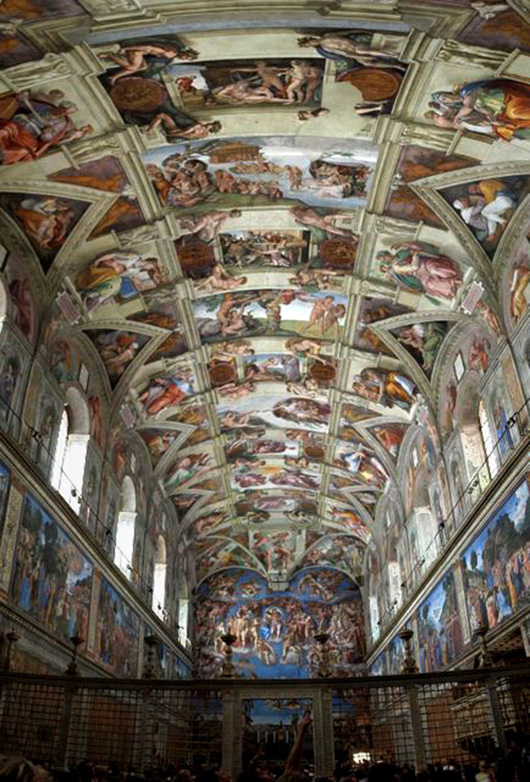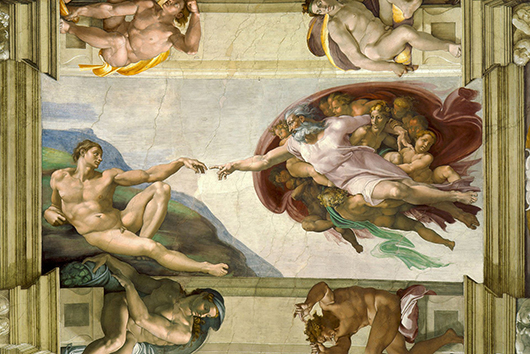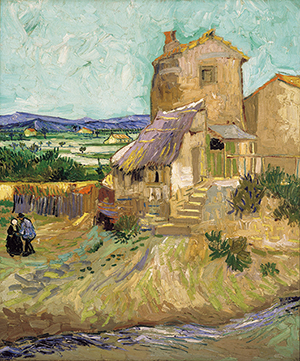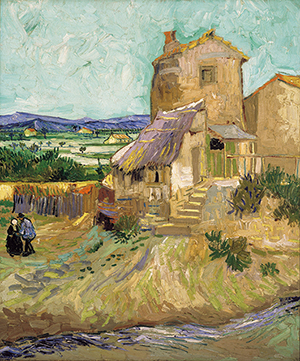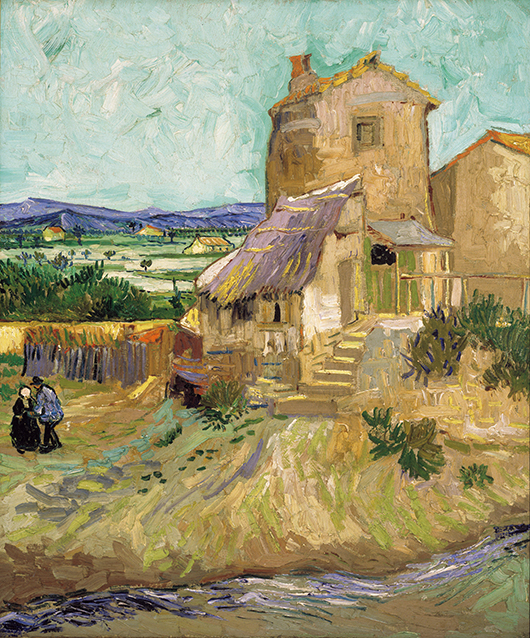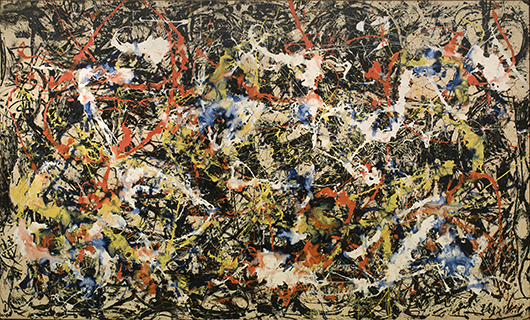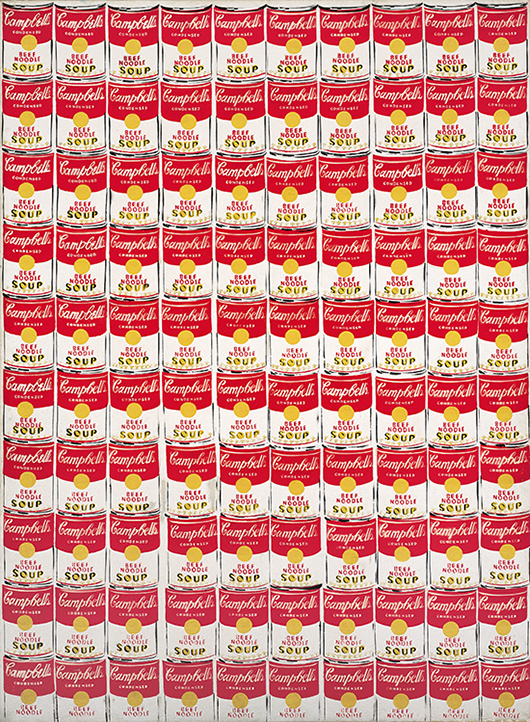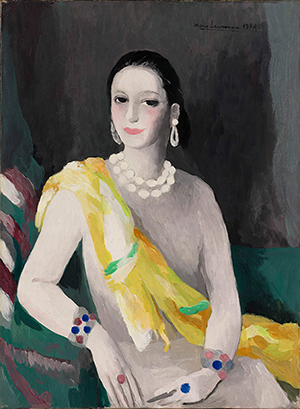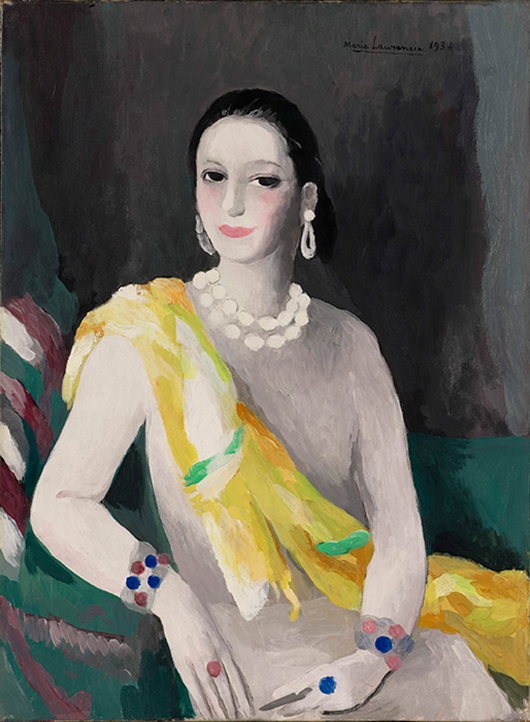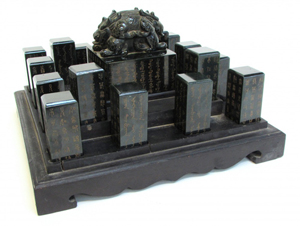
Fitted with 16 seals of green jade, this rare antique Chinese carved Imperial seal box sold for $90,000. Gordon S. Converse & Co. image
MALVERN, Pa. – A rare antique Chinese carved imperial seal box, fitted with 16 seals of green jade circling a large 4-inch square central Shi-mounted seal, sold for $90,000 at an East Meets West Auction held Oct. 3 by Gordon S. Converse & Co. The seals were this sale’s top lot.
Internet live bidding was provided by LiveAuctioneers.com.
Just under 400 lots came up for bid, with the East portion consisting of Asian – mostly Chinese – art and antiques, including an especially large selection of porcelains, as well as furniture, scrolls, bronzes and even some stamps and currency. Balancing these were Western lots, comprised of antique furniture, clocks, vintage fine and decorative arts, Civil War memorabilia and autographs. Overall, the auction was a success.
“We’ve had tremendous good luck conducting auctions that combine the Eastern and Western culture interests,” said Gordon Converse of Gordon S. Converse & Co. “We feel we’ve established a good market for buyers of Asian antiques, and we routinely attract bidders willing to pay strong prices for better items. It was certainly true in this sale, with all Asian categories doing well. Even watercolor art, artifacts and Chinese currency, which can be spotty, did well.”
Following are additional highlights from the auction. All prices quoted include a 20 percent buyer’s premium.
Antique Chinese zitan wood furniture did well. The auction’s second top lot was a Qing-era zitan throne chair featuring outstanding carved panels showing 19 five-clawed Ming dragons, among other figures. It sold for $30,000. Also, an armchair of thick and heavy zitan wood with three upper sides, mortised for easy transportation and central flowing back splat design, sold for $4,800.
Other antique chairs also fared well. Two Qing huanghuali folding horseshoe arm chairs having seat covers of webbed rope, plus brass bound frames and foot rests, went for $9,000; and two dark zitan yoke back chairs with carved dragon medallion and the old finish hit $3,900.
In the clocks category, a late 19th century French 400-day running clock-and-aneroid barometer combination – a rare compound “dumbbell” year running pendulum timepiece, with a beveled glass and heavy brass case – finished at $6,000. Also, a late 18th or early 19th century Chinese table clock featuring a calendar aperture through an engraved dial mask hit the mark at $3,900.
A set of 10 Royal Copenhagen Flora Danica reticulated plates, each 8 3/4 inches in diameter and all numbered en verso, with Latin botanical titles in curved script, garnered $6,600, while a Louis Comfort Tiffany gold baluster form vase, 9 inches tall with iridescent gold and pink sheen behind green vines, brought $3,900. The vase bore the bottom etched-on name of “L.C. Tiffany” and was dated to between 1915 and 1918.
Returning to Asia, an especially large 6 1/2 inch Imperial green jade seal and its incised carved box breezed to $24,000, a dragon jade, intricately hollow-carved with white jade, 3 1/2 inches by 3 inches, reached $600, and a 16 1/2-inch-tall 19th century gilt bronze finely cast Buddha on an elevated stand hit $2,160.
A pair of 23-inch Qing, possibly Qianlong, fine famille rose lidded porcelain jars with figure and landscape motifs, each one standing 23 inches tall, were sold as one lot for $4,200. A Ming dynasty lidded jar featuring reserves with three-color dragons, phoenixes, chimeras and more, 20 inches tall, went for $26,400.
A Chinese silver tea service featuring a handled tray, teapot, sugar and creamer, with bamboo edging and handles applied on dragons, hallmarked “Wosing Lung” and “Shanghai” and weighing 70-80 troy silver ounces total, brought $5,100. A Chinese rosewood zitan table screen with one side showing a lacquer landscape and the other carved hardstone relief figures, made $4,800.
For details contact the Gordon S. Converse & Co. at 610-722-9004 or send an e-mail to Todd Converse at Todd@ConverseClocks.com or Gordon Converse at Gordon@ConverseClocks.com.
Click here to view the fully illustrated catalog for this sale, complete with prices realized.
ADDITIONAL LOTS OF NOTE
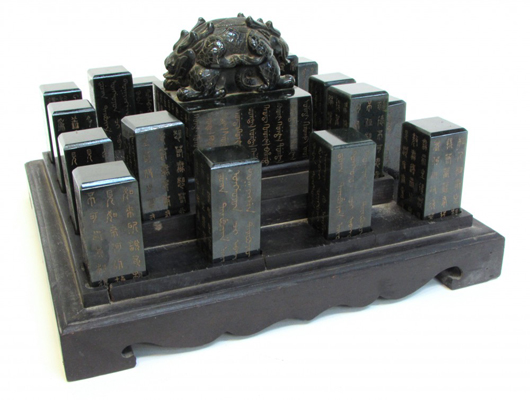
Fitted with 16 seals of green jade, this rare antique Chinese carved Imperial seal box sold for $90,000. Gordon S. Converse & Co. image 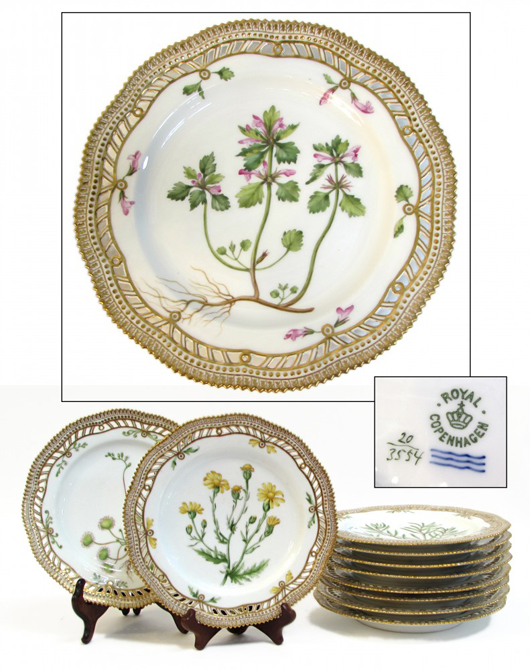
Set of 10 Royal Copenhagen Flora Danica reticulated plates, each 8 3/4 inches in diameter. Price realized: $6,600. Gordon S. Converse & Co. image 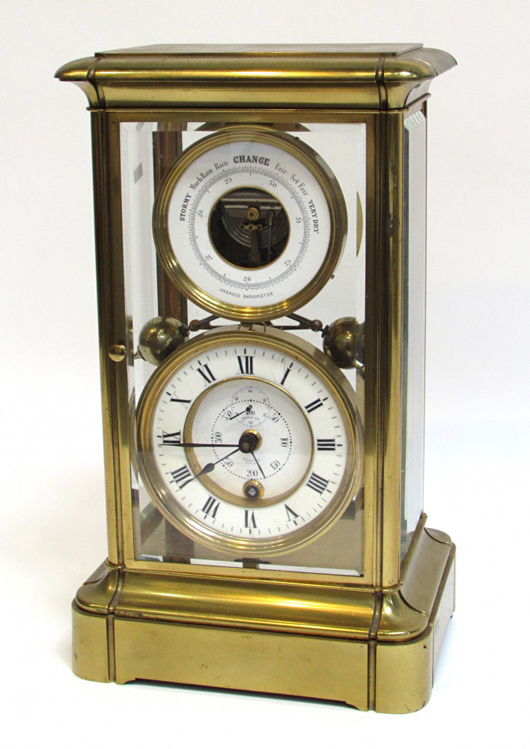
Late 19th century French 400-day running clock-and-aneroid barometer combination. Price realized: $6,000. Gordon S. Converse & Co. image 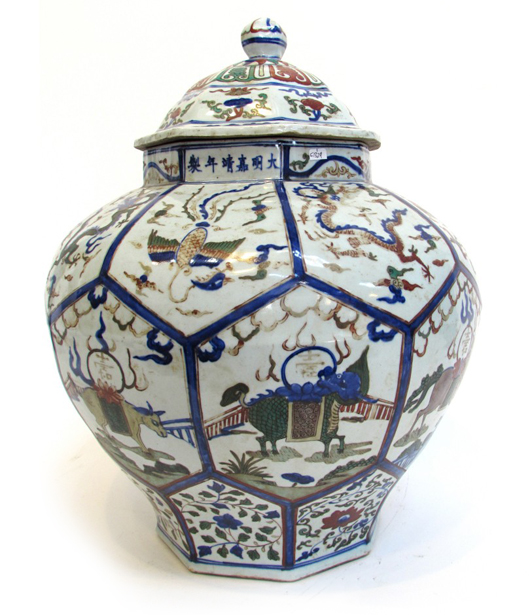
Ming dynasty lidded jar featuring reserves with dragons, phoenixes and chimeras, 20 inches tall. Price realized: $26,400. Gordon S. Converse & Co. image 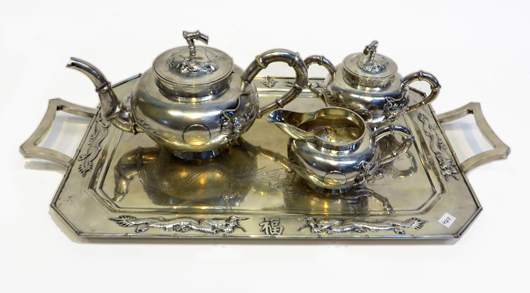
Chinese silver tea service featuring a handled tray, teapot, sugar and creamer, with bamboo edging. Price realized: $5,100. Gordon S. Converse & Co. image 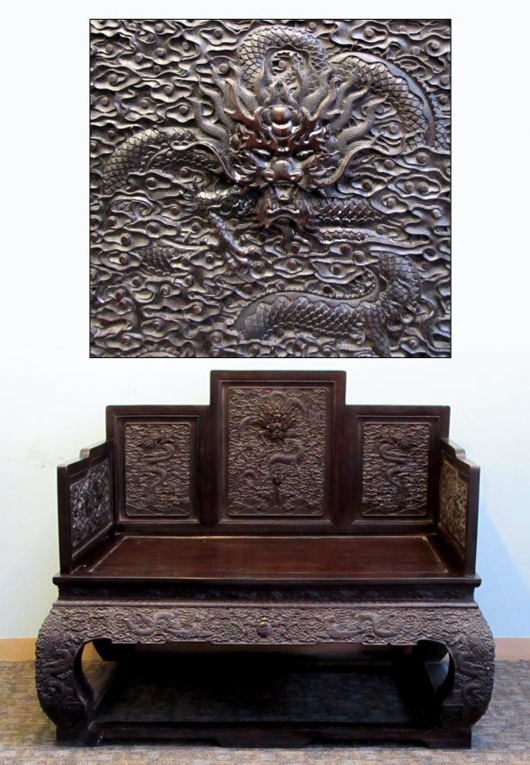
Qing-era zitan throne chair featuring outstanding carved panels showing 19 five-clawed Ming dragons. Price realized: $30,000. Gordon S. Converse & Co. image


